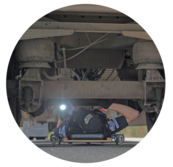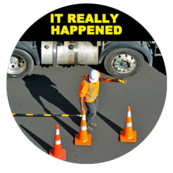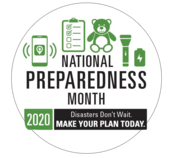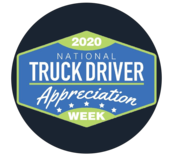Teaming Up Keeps COVID-19 Down
Social distancing is the best way to avoid COVID-19, but it’s a challenge for truck drivers. Truck drivers can’t work from home and being on the road requires them to stop at public places. It is even harder for team drivers or when traveling with a passenger—there is no way to stay 6 feet apart inside a truck cab. Management, drivers, and passengers should have a disease prevention plan for when social distancing is not possible. The following tips can help lower infection risks for drivers and passengers riding together.
|
|
 |
Tips to live by
Rescheduled International Roadcheck is September 9-11
Postponed since March by COVID-19, the Commercial Vehicle Safety Alliance (CVSA) will hold its 33rd annual International Roadcheck inspection blitz from September 9-11. This year’s focus will be on driver operating requirements. U.S. Federal Motor Carrier Safety Administration data shows that of approximately 3.36 million roadside inspections in 2019, 952,938 driver violations were found, including 199,722 out-of-service conditions. In past years the event focused on steering and suspension, hours-of-service, hazardous materials/dangerous goods, cargo securement, and tire safety.
|
|
 |
Continue reading
Fleet Maintenance Tips
Truck drivers risk serious injury when they work on or around trucks parked too closely to traffic. Parking your truck a safe distance away helps prevent injury to you and damage to your rig. A 32-year-old truck driver learned this the hard way when he fell from his trailer after it was hit by another truck.
The driver parked his truck near an area that other trucks passed through often. He got out of the cab and climbed about five feet up on the trailer to adjust some equipment. As the driver worked, the sound of nearby vehicles faded from his attention. Another truck suddenly struck the driver’s trailer, sending him falling to the ground. As the driver fell, he hit his back against a metal cargo bin before landing hard on his left side. Feeling instant pain shooting through his head, back, and neck, the driver needed immediate hospital care.
|
|
 |
Tips to live by
Are You Ready? September is National Preparedness Month
News headlines remind us every day about wildfires, tornados, hurricanes, power outages, and other disasters. Preparation is key to getting through such events, especially now as COVID-19 makes responding to emergencies much harder. National Preparedness Month promotes disaster planning to help people prepare and stay ready for emergencies in their homes, businesses, schools, and communities. Each week features a different focus:
National Preparedness Month began in 2004 as a sponsored program of the Federal Emergency Management Agency.
|
|
 |
Continue reading
National Truck Driver Appreciation Week 2020 is September 13-19.
National Truck Driver Appreciation Week is a time to pause and reflect on the importance of truck drivers in keeping the country moving. Our everyday lives depend on them, especially their crucial role during the COVID-19 pandemic. Truck drivers transport food, clothing, electronics, medical supplies, construction materials, and just about everything else that we need. Without truck drivers, our world would come to a grinding halt. A truck driver is someone who performs a job that requires commitment, professionalism, safety awareness, and plenty of sacrifice that includes working long periods away from home and family. So next time you see a truck driver, say thank you.
|
|
 |
Continue reading
Continue reading
|
|
EDUCATION & TRAINING
If you're experiencing issues with Internet Explorer or Chrome, try a different browser like Firefox, Opera, Edge etc..
Why Have a Safety Program?
This interactive course teaches how having a safety program can keep your trucking workplace safe, productive, profitable, and clear of compliance violations.
Try our training tool
Conduct an Injury Investigation
Root cause analysis is a process for finding the what, how, and why something happened to prevent it from happening again in the future.
Try our training tool
|
|
|
|
|
|